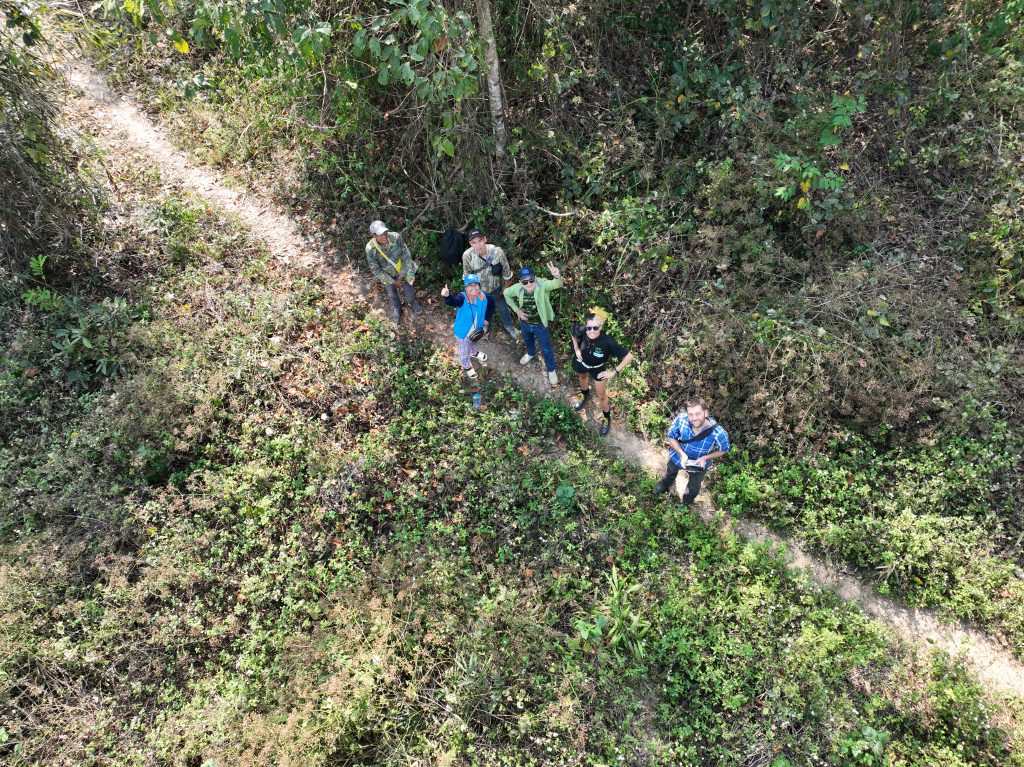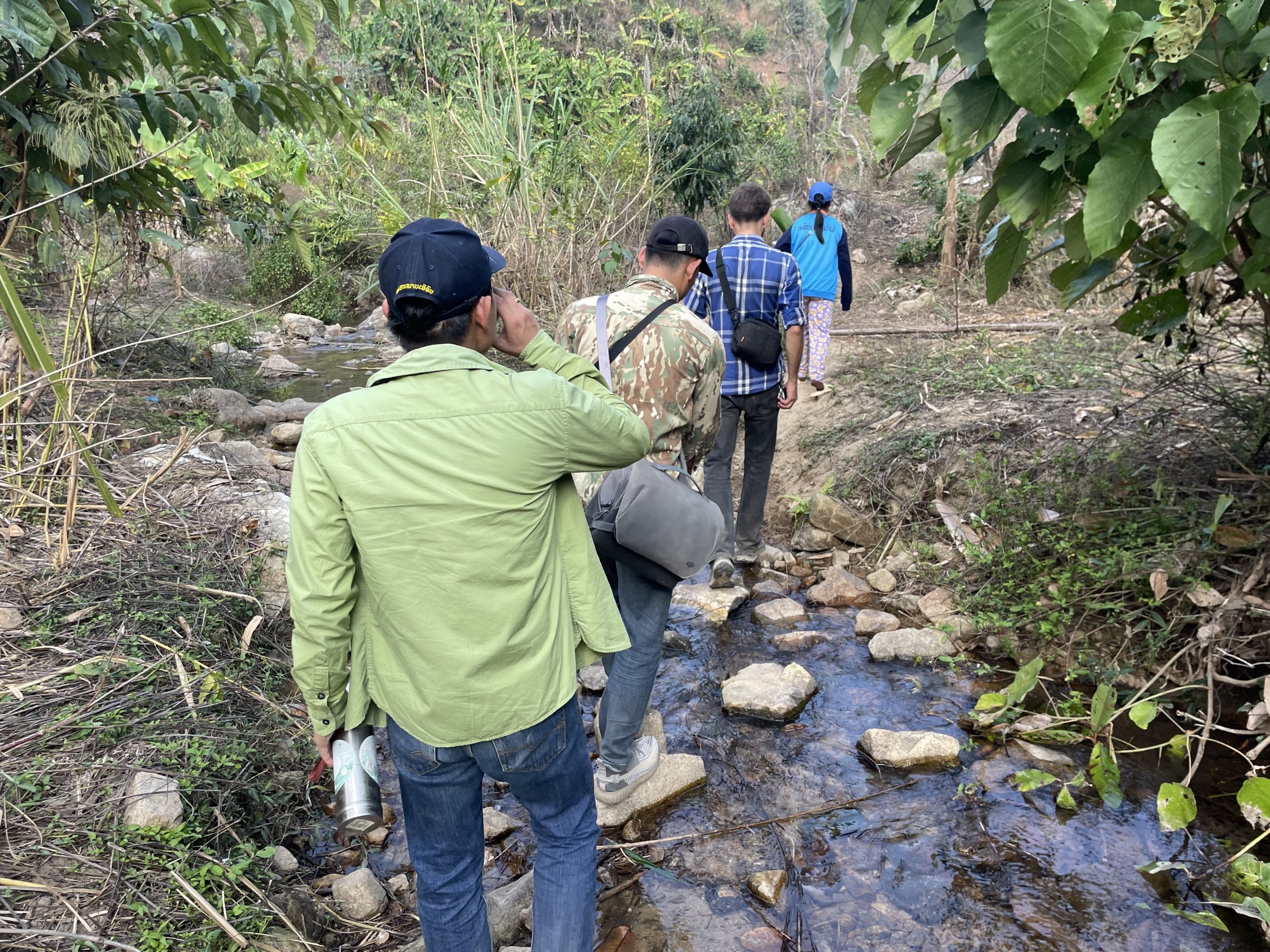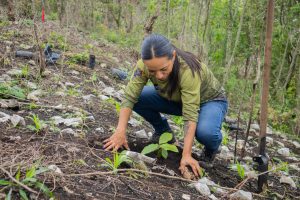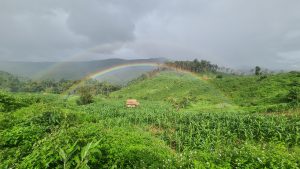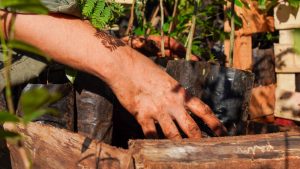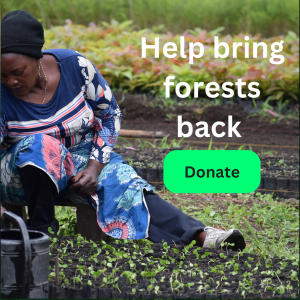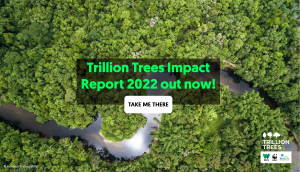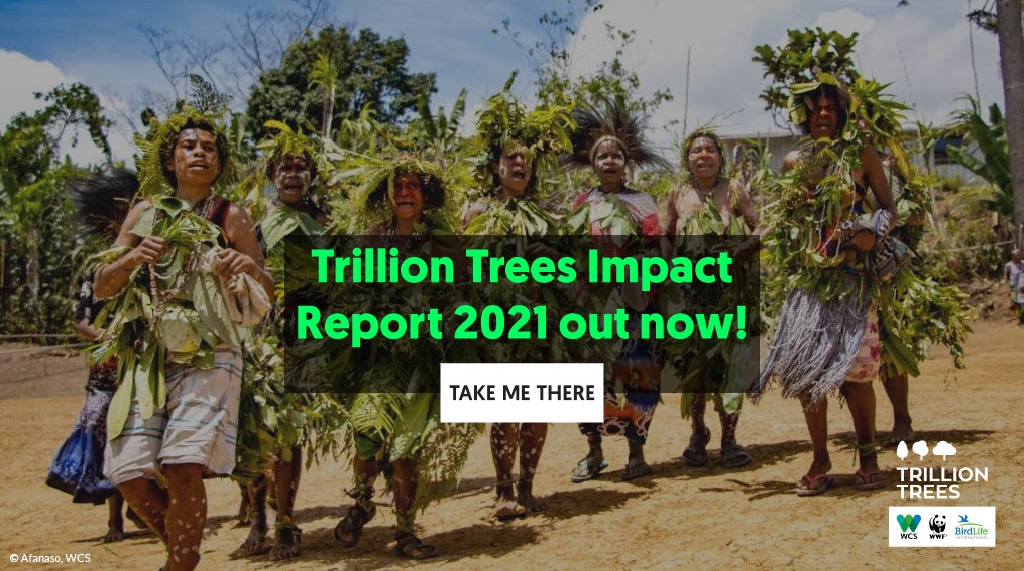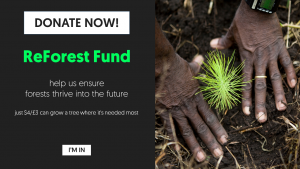I am writing this in a truck, on a long, dusty, bumpy dirt track, heading back from Nam Et Phou Louey National Park (NEPL), Laos, where I had the huge privilege to visit one of our latest ReForest Fund restoration projects.
Working in conservation can feel demotivating at times, with an increasingly insecure global economy, and a looming and unpredictable climate crisis. One can be left feeling like a hospice worker for nature, trying to make things less bad for as long as possible, rather than really changing the direction of travel. With this in mind, it is important for me to remember exactly what our work does on the ground. The effects of high-quality forest landscape restoration, however small relative to the scale of global deforestation, can be life changing for people and wildlife and have an impact on local weather patterns and the global climate. This is why I was so grateful to get a chance to visit NEPL and touch the grass there.
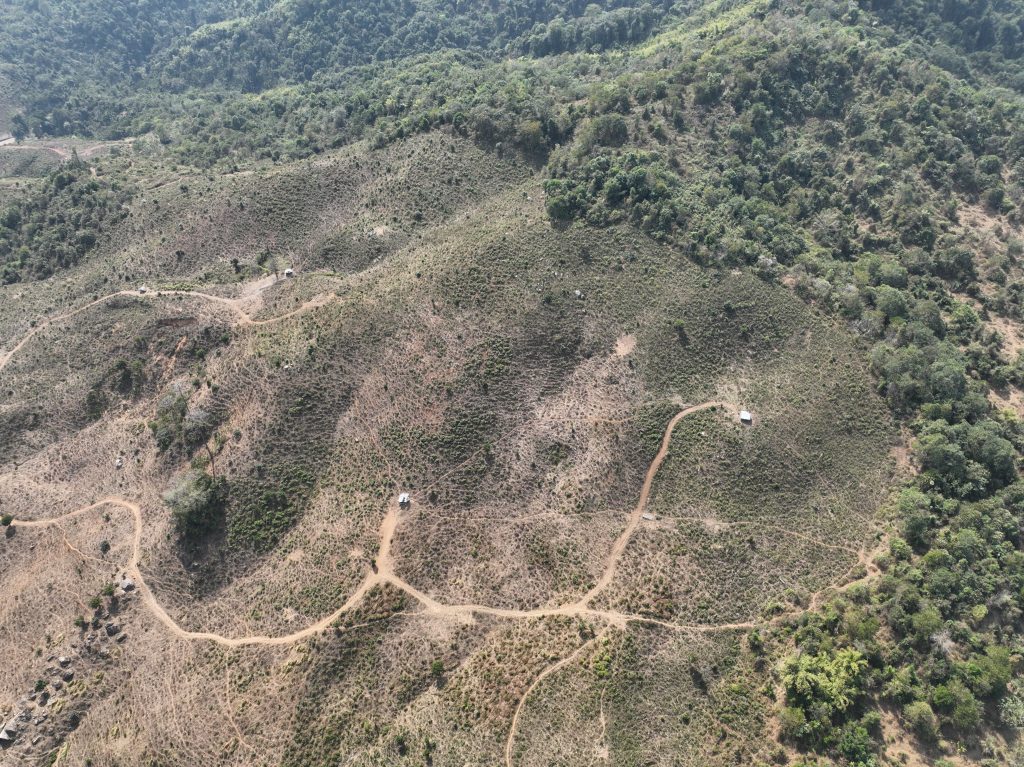
I travelled for 7 hours with Mr. Singkeo, a driver who has worked for WCS Laos for over 20 years, through beautiful hills, following a deep river valley all the way to the biggest protected area in Laos. Along the way I noticed scars on the landscape, huge plots of barren brown land, human influence evident in the neat lines of destruction, bordering dense and diverse forest. Livestock wandered along the roads and hillsides, beautiful cows, pigs and chickens, some with an apparent death wish, ambling towards the path of our oncoming vehicle. In the distance, rising peals of smoke and blackened hill sides loomed, heralding the start of the burning season. Each year, fields are lit ablaze to quickly increase soil fertility, with a side effect of wildfires, smoke, and poor air quality for several months.
Nam Et Phou Louey National Park, named for Phou Louey Mountain and the Nam Et River, stretches over 400,000 hectares of land, divided into a core protected zone and a managed use zone, in which the park's 98 communities can live and extract resources. Over 30,000 people call NEPL home. Life here is tough, as steep mountainous terrain provides poor land for farming. Shifting cultivation is common and largely for subsistence, evident from the many bare hillsides inside and outside the park. Poverty is widespread and many rely on forest resources including wildlife, wood, and non-timber forest products to create a livelihood. Recently, land use demands have shifted, as cattle production, subsidised by the government, has drastically increased to feed the nearby Chinese market. This has potentially devastating consequences for the wild areas on NEPL. Cattle roam seemingly freely, not caring for human boundaries or borders in their search for fodder.
Upon arrival in NEPL, I met with the team from WCS Laos. Jay White is the biodiversity and data specialist for the country. He leads on our shared project to restore over 30 hectares of degraded land to healthy natural forest, connecting other forest patches that surround the area. We spent hours letting our dinner go cold while discussing all things Laos conservation.
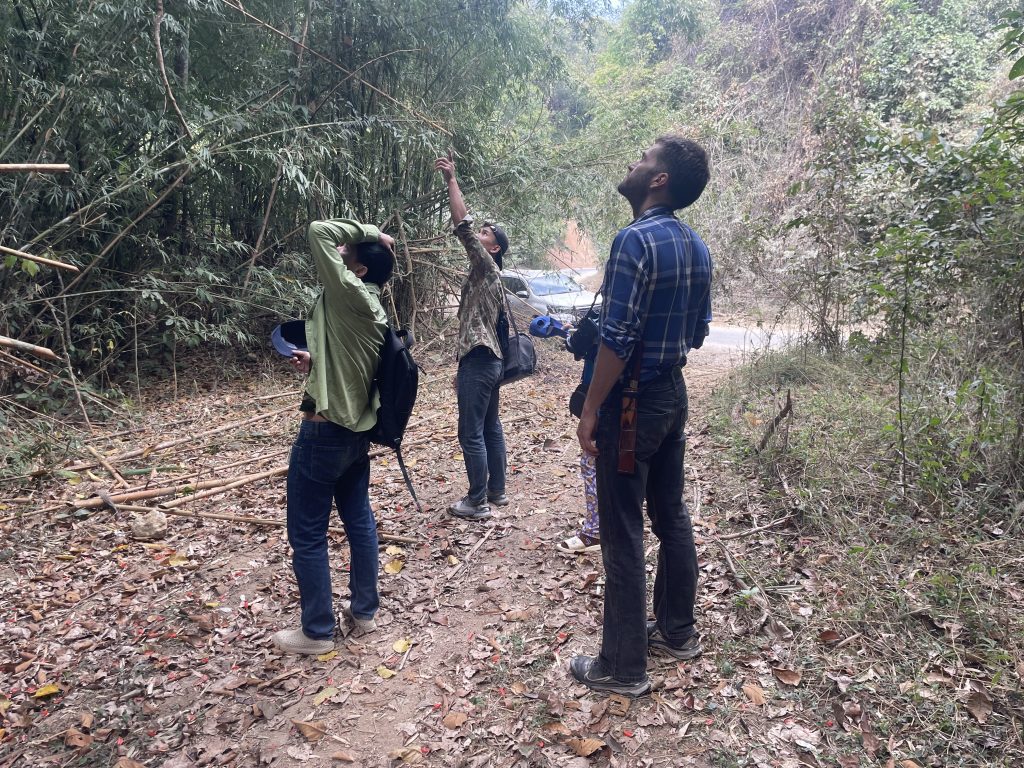
The National Park is an odd shape, large areas connected only by thin corridors. Landscape fragmentation like this leads to habitat degradation and inbreeding of already rare species. When combined with the concurrent threats of deforestation and hunting for wildlife trade, it is easy to see why there has been dramatic loss of biodiversity in the park in the last few decades, exemplified by the loss of iconic megafauna such as tiger and gaur from NEPL.
Wildlife corridors are vital to addressing habitat fragmentation and why the Trillion Trees restoration site is so important. Near the village of Nam Phoung on the boarder of the controlled use zone, a small strip of land connects the south and west protected areas of NEPL, and it is here that the 30+ hectare site of degraded forest WCS Laos intends to revive is found. Once restored, this forest will strengthen a bridge for the remaining species of the park – dhole, clouded leopard, bear, civet and, of course, the trees and other plants that make up the forest itself – to expand and thrive.
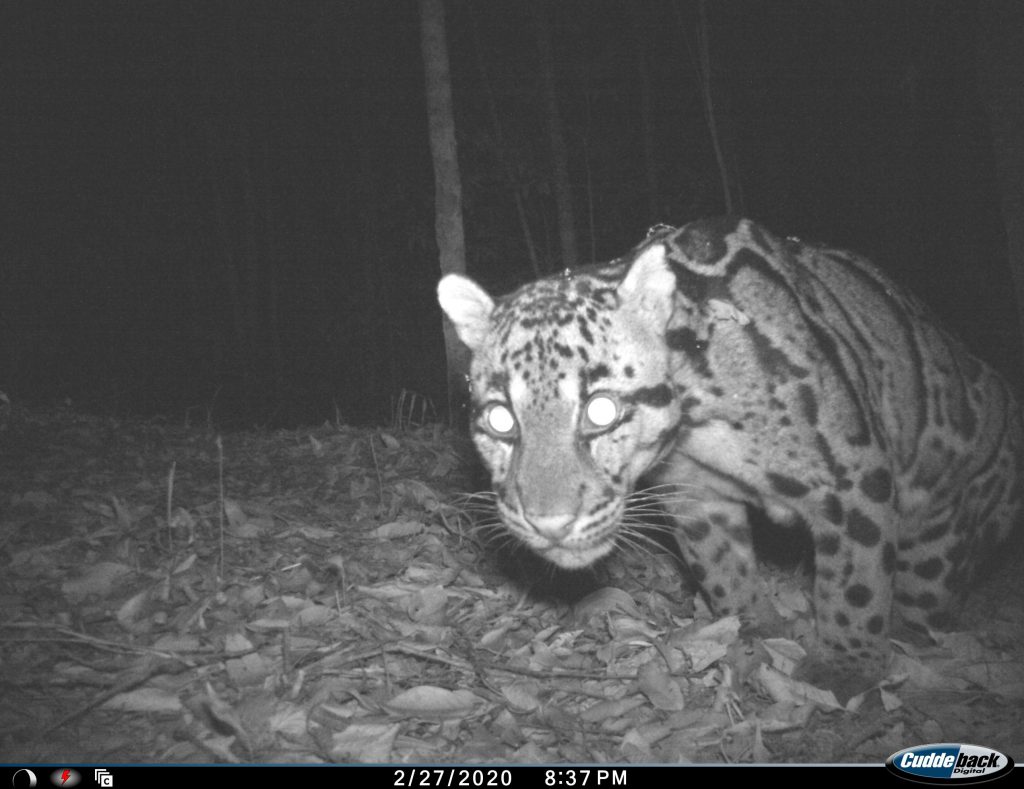
The goal is to naturally regenerate the forest. Rather than growing and planting saplings, WCS Laos will assist and protect the regeneration of natural forest with minimal human intervention. Compared to tree planting, natural regeneration is cheaper, leads to more biodiverse forests, and has potential for stronger climate impact. While often a longer process than tree planting, research suggests that, globally, naturally regenerated forests have the potential to absorb up to almost 23% of our global carbon dioxide emissions each year through 2050.
The NEPL site, previously cleared of primary forest and ploughed for agriculture, has been fallow for over five years and in this time overtaken by invasive flora - primarily Chromolaena odorata. This South American plant has been transported across the world and is now choking and snapping young saplings that are struggling to reclaim the degraded piece of land. Jay and his team, in partnership with the local community in Nam Phoung, will clear these vines and other invasive species preventing forest regrowth. This work will take several years, as repeated clearing is needed until the tree canopy encloses, which will discourage ground level growth. In addition, the site will be protected from deforestation, illegal hunting, and livestock encroachment.
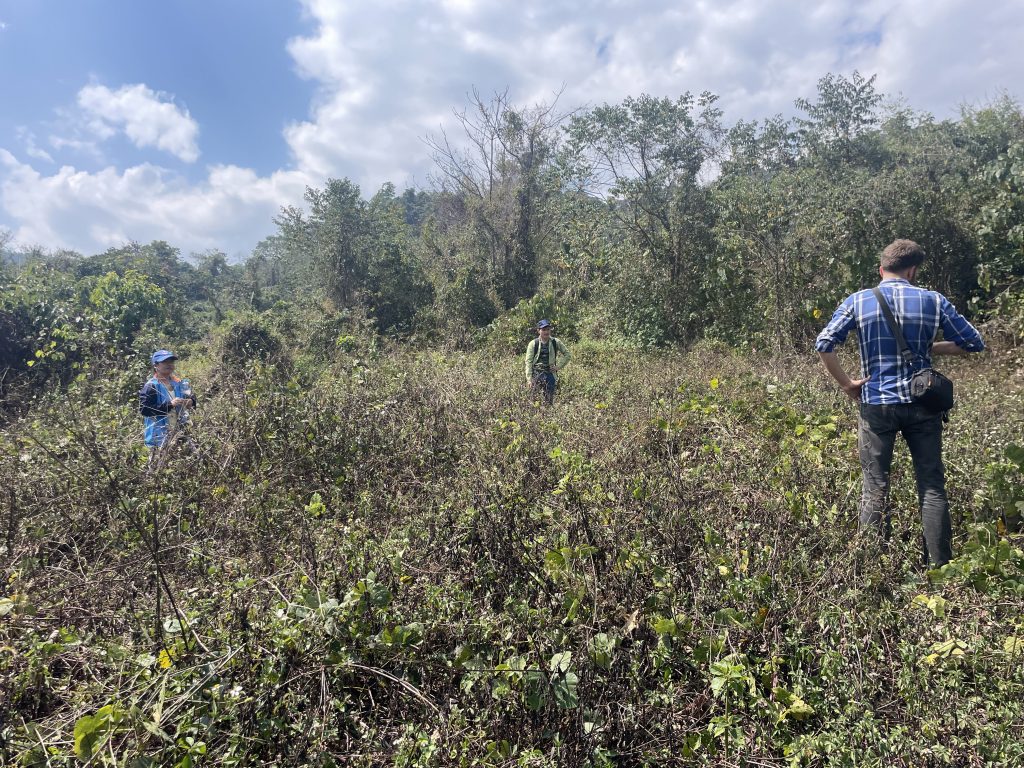
The key realisation from this trip has been the importance of partnership and here, I think, I find my greatest reason for hope. Conservation must be a collaboration. Through the NGO’s and experts that advocate for nature, governments who prioritise the protection of wildlife and wild places in their state, and the communities that live alongside them and have the highest impact on biodiversity.
Only by coming together and addressing the needs of people, nature and climate, can we restore forests to their rightful state. Trillion Trees and our partners in the field are committed to achieving this goal. Although balancing the needs of people and nature can be difficult, I hope we will ride this long, dusty, bumpy dirt track together.
You can read more about our project in the Nam Et Phou Louey National Park, Laos here.
